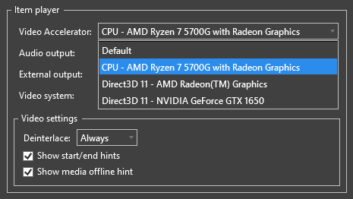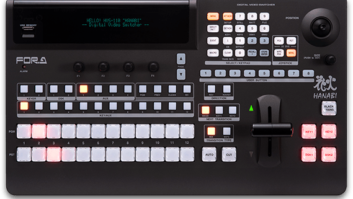
Michel Rudelle, EMEA regional manager Apantac, explains the current Ultra HD/4K monitoring options
Ultra HD and 4K formats are gaining momentum. Large events such as the Olympic Games, World Cup Soccer and other major sporting events are perfect showcases for TV manufacturers to promote the sale of Ultra HD TV sets, which are now widely available. This creates a demand for Ultra HD production and Ultra HD/4K or Ultra HD/4K capable OB vans and studios.
Studio solutions for carrying Ultra HD/4K signals over a single wire whether it is over coax, fibre or IP are emerging; however none of them have become the de facto standard so far. With current technology, Ultra HD/4K signals are most often transported as four 3G-SDI @ 50/59.94 Hz signals.
What are the options for monitoring 4x 3G-SDI Ultra HD/4K signals?
* Use Ultra HD/4K reference monitors (QFHD). These monitors provide the best results both in terms of resolution and colour reproduction. However, they are quite expensive and often only one of these monitors is used at the output of the production switcher.
* Use a converter that will turn 4x 3G-SDI Ultra HD/4K signals into HDMI 2.0 or Display port 1.2 to drive a consumer monitor with a Ultra HD/4K panel. Although the colour reproduction accuracy may not compare with reference monitors, this approach is used in various positions of the production chain where native resolution and frame rate preservation are critical.
* Convert Ultra HD/4K signals down to 1080P/i and use regular HD resolution monitors. This approach is the cheapest of the three and is used whenever preserving UHD/4K resolution is not mandatory. Multiviewers that accept 4x 3G-SDI Ultra HD/4K signals, such as the Apantac ones, also use scaling to display several Ultra HD/4K sources on a monitor.
There are several 4x 3G-SDI to Ultra HD/4K converters with an HDMI output on the market and some of them have an HDMI 1.4 output. With HDMI 1.4, the maximum output frame rate at UHD/4K resolution is 30Hz, which is not acceptable in many production situations. Other converters offer an output format of HDMI 2.0b: 3840 x 2160p, 8 bits, 4:2:0 at 50, 59.94, 60Hz. This means that the chrominance has HD, not Ultra HD resolution.
Display Port 1.2 is an alternative display interface to HDMI 2.0. It carries Ultra HD (3840x2160P) and 4K (4096x2160P), RGB 4:4:4 and YUV 4:2:2, 10 bits, at 50, 59.94, 60Hz, thus preserving the Ultra HD/4K signal quality up to 60Hz. Several inexpensive monitors supporting Display Port 1.2 SST are now available. When combined with the Apantac Micro-4K-DP, 4x 3G-SDI Ultra HD/4K to Display Port 1.2 SST converter, you have a cost effective solution for monitoring Ultra HD/4K signals without signal degradation.
The Apantac product range also includes the Micro-4K, which accepts 4x 3G-SDI Ultra HD/4K signals up to 60Hz and down converts them to 1080P or 1080i, HDMI and SDI.
The Micro-4K-DP, the Micro-4K, and many more products are showcased on the Apantac stand. Please stop by and see for yourself.
8.E37







